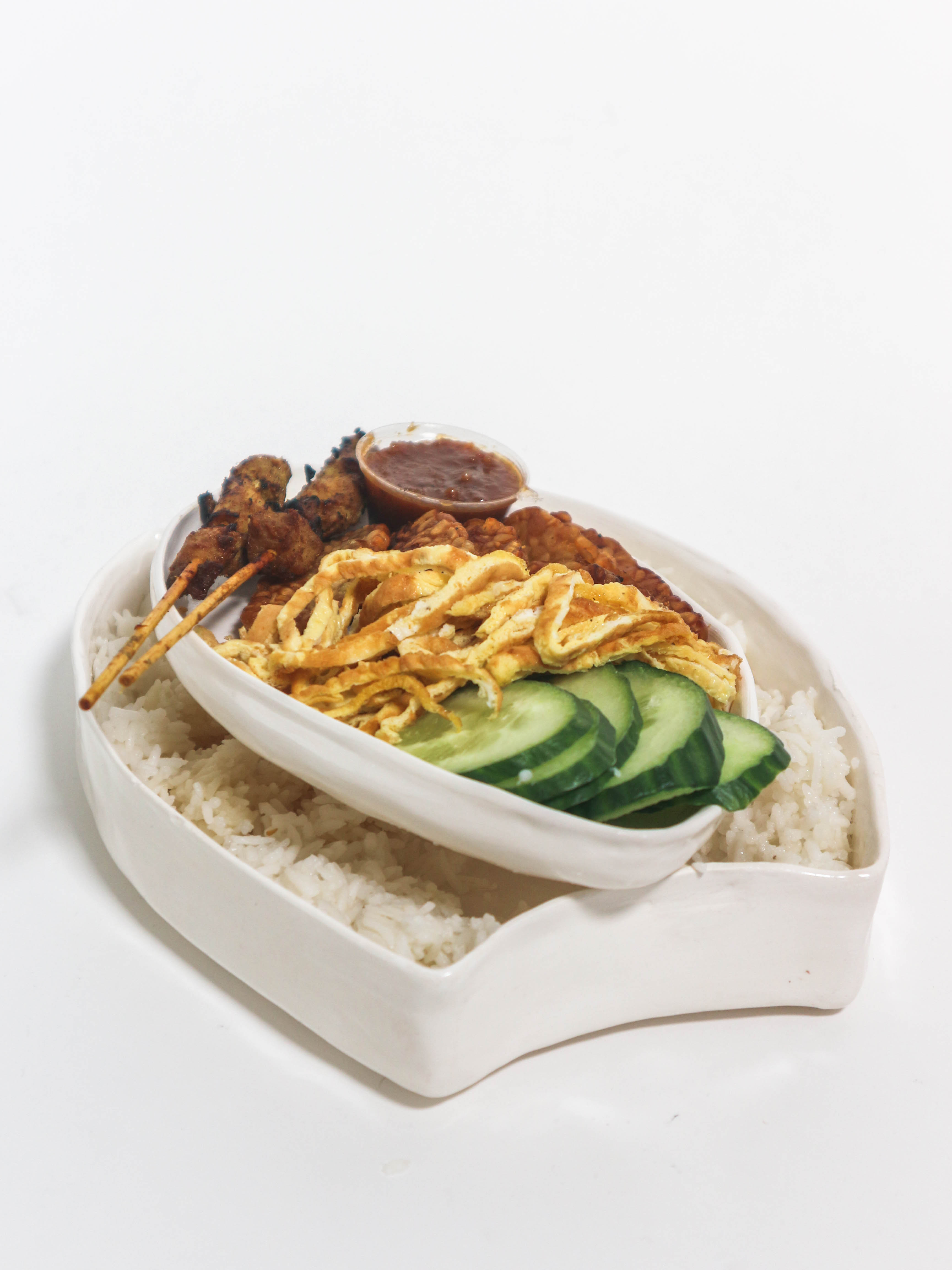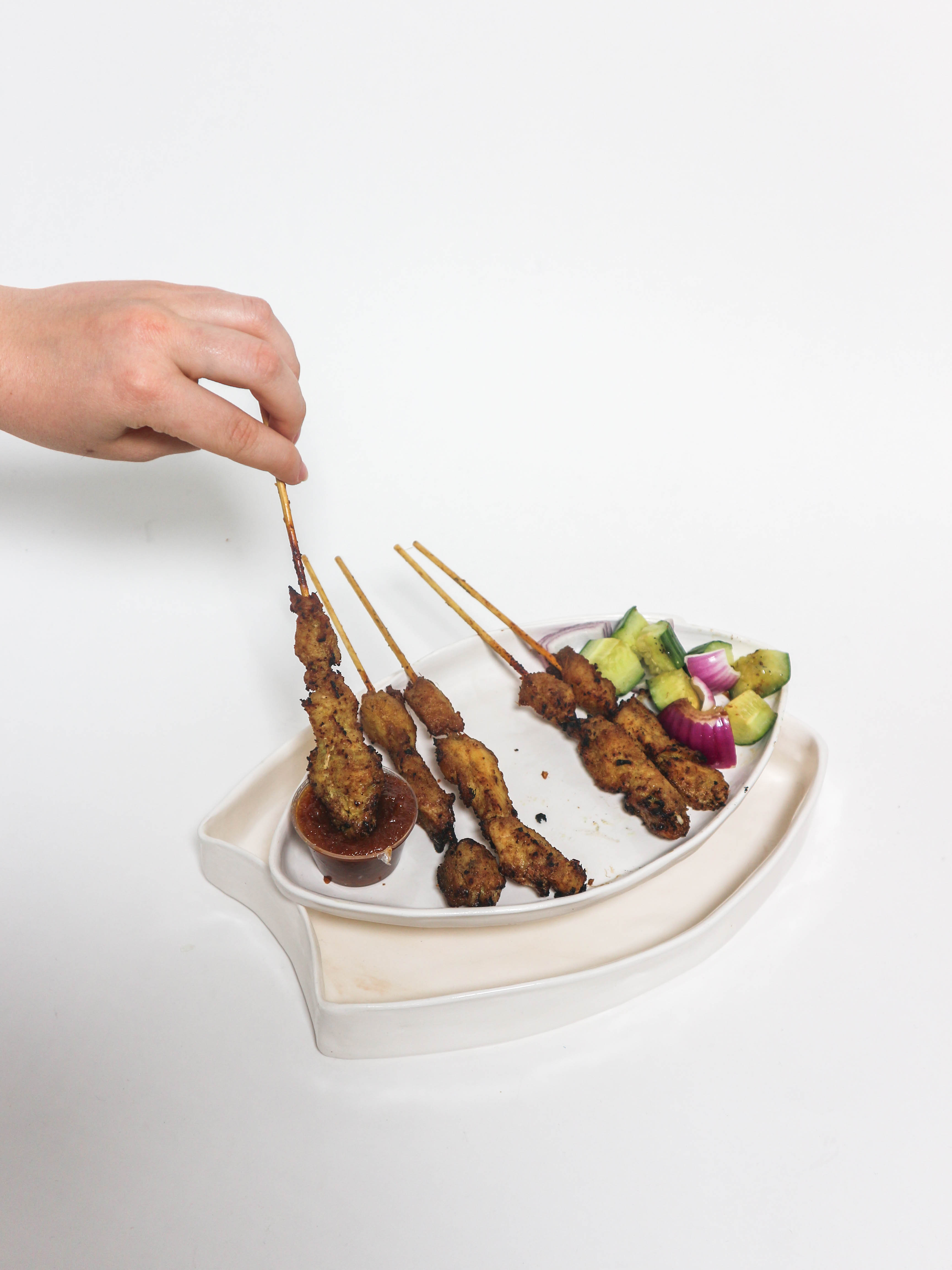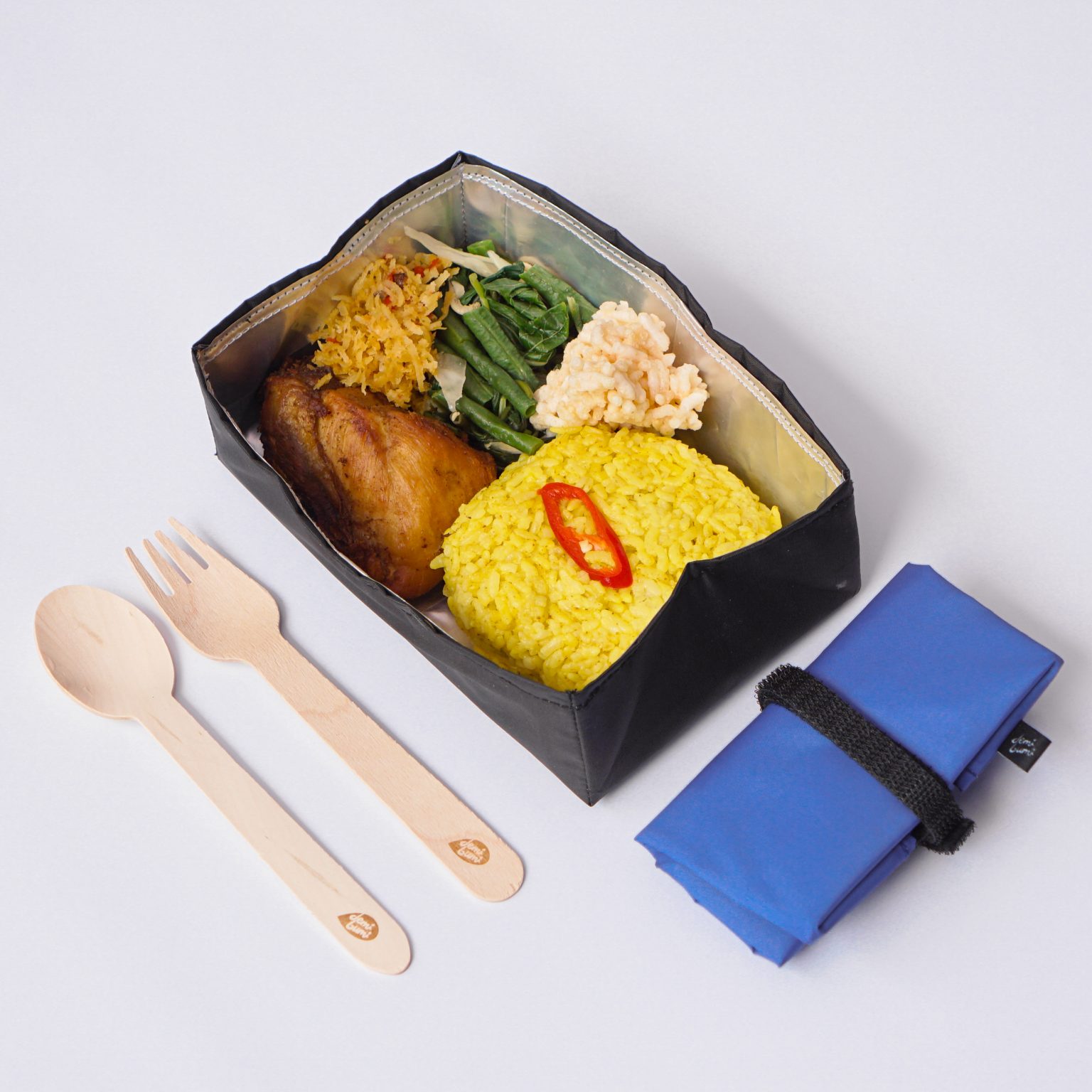EATING - KAWUNG
WHAT
This tableware set is inspired by Batik patterns, which are traditional Indonesian cloths. It is more efficient than regular plates, especially when eating Indonesian food that consists of various components, sauces, toppings, and so on. This set allows people to enjoy a full meal without taking up too much space on the table.WHY
This concept lets people enjoy traditional Indonesian food using plates that fit smaller homes. It aims to maximize space while still allowing for the complete experience of sharing Indonesian food with loved ones. Every element, including the sauce, is crucial to fully experiencing Indonesian cuisine, and lack of space shouldn't prevent people from enjoying it.
SPARK
At first glance, I examined the plates we use today. I realized that plates have so much to offer compared to what we currently have. Often, our plates are simply circular and flat, decorated with colors and textures, and created with shapes that have no meaning.
However, as we consider the constraints of modern life, I began to wonder:
What if we could enhance the dining experience, particularly when serving complex dishes, such as Indonesian cuisine?
EATING EXPERIMENTATION
An eating experiment in which I served Nasi Goreng - an Indonesian dish - to people who had never tried it before. The experiment involved guiding them through the process of eating the dish.
LEARNINGS
LEARNINGS
- Sauces move around when placed only in one area, so it would be better to have them in smaller spaces.
- A focal point of the meal should be established to help people understand the hierarchy of the food experience.
- Tableware takes up too much space, and it would be better if they could slot together to waste less space.

SEMIOTICS OF THE JAVANESE HOME
I took inspiration from Batik, especially Batik Kawung. The pattern symbolizes togetherness and is also a simple pattern that is similar to today's circular and square plates. It can also be used to create a scalable pattern to maximize the space on the table.






photos edited by Jayson Mussry
EATING - REUSABLE TAKEAWAY BOX
WHAT
A reusable lunchbox made from recycled coffee bags. It can be easily flatpacked for convenient storage and transport.
WHY
Historically, Indonesians have consumed many meals that are wrapped, usually using banana leaves as packaging. However, as we transition to plastic packaging, the impact on the planet becomes a concern.
How can we continue this tradition without harming the environment?
A reusable lunchbox made from recycled coffee bags. It can be easily flatpacked for convenient storage and transport.
WHY
Historically, Indonesians have consumed many meals that are wrapped, usually using banana leaves as packaging. However, as we transition to plastic packaging, the impact on the planet becomes a concern.
How can we continue this tradition without harming the environment?

SPARK
Indonesians are heavy coffee consumers, which results in a significant amount of coffee bag waste. What if we could repurpose this waste to create on-the-go packaging that is easy to bring along?By catering to the on-the-go lifestyle, this idea encourages people to make a behavioral change without a significant burden.
Since big and bulky lunch boxes are not portable, the takeaway box created should be lightweight and easily cleanable.
Since big and bulky lunch boxes are not portable, the takeaway box created should be lightweight and easily cleanable.

